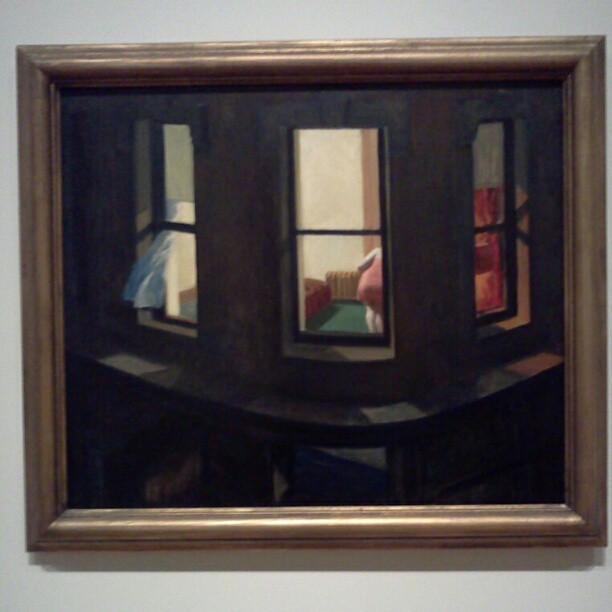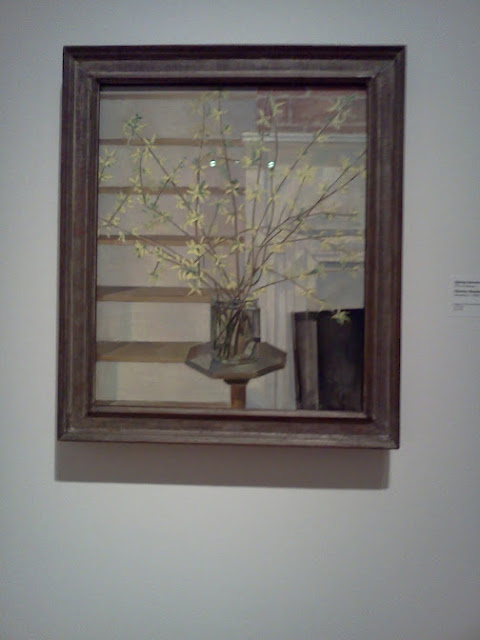I recently flew to Cleveland and got to see some great American paintings at the Cleveland Museum of Art.
I wrote about Edward Hopper's Night Windows (1928) in my grad school thesis paper. As I looked at it, I remembered that my thesis advisor told me she learned to paint by looking. And it's really true. If you spend enough time with a painting you really can suss out how it was put together, using which colors and in what order.
I also saw this great still life, Spring Interior (1927) by Charles Scheeler. I always see the same few Sheeler paintings in books and at the Art Institute of Chicago. I was never crazy about his work, but when I saw this painting, it felt totally fresh and different to me. Each branch is just exactly where it needs to be. It is the kind of painting that I would point to as an example of how sometimes composition can feel like perfection. I can't say why, but when it's good you just know it. I get so excited when an artist I thought I knew (and didn't really care about) does something that surprises me and I love it and then it all makes sense.


